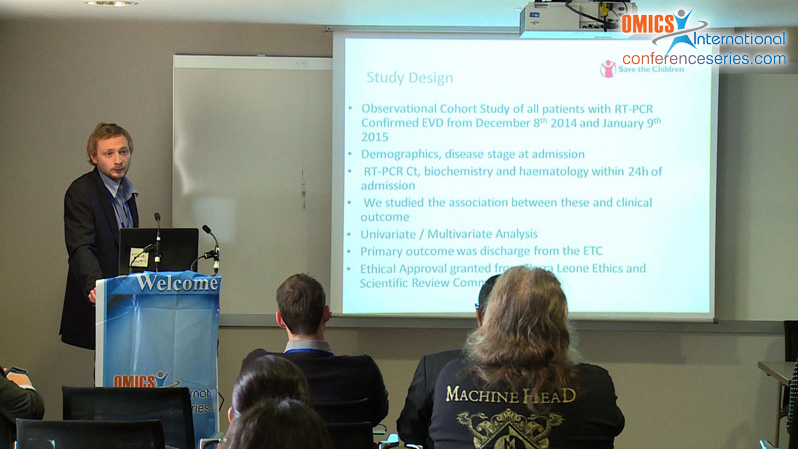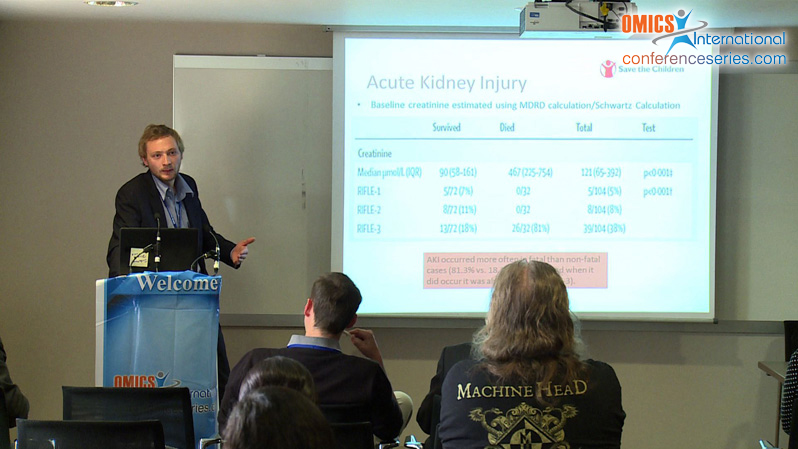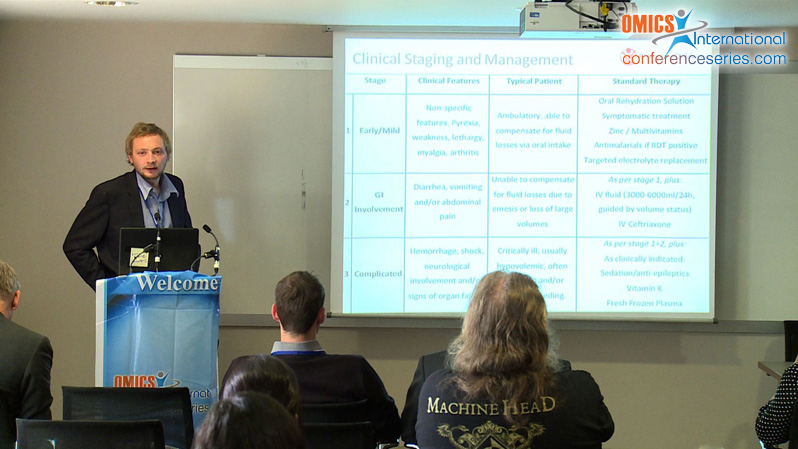
Luke Hunt
Liverpool School of Tropical Medicine, UK
Title: Clinical presentation, biochemical and haematological parameters and their association with outcome in patients with Ebola virus disease: An observation cohort study
Biography
Biography: Luke Hunt
Abstract
Background: Clinical management of Ebola Virus Disease (EVD) remains challenging. Routine laboratory analytics are often unavailable in the outbreak setting, and few data exist on the associated haematological and biochemical abnormalities. We present laboratory and clinical data from the Kerry Town Ebola Treatment Centre in Sierra Leone to better inform clinical management algorithms, improve understanding of key variables associated with outcome and provide insight into the pathophysiology of EVD.
Methods: 150 patients with confirmed EVD were admitted between 8th December 2014 and 9th January 2015. At admission, all patients had clinical presentation recorded and blood taken for Ebola confirmation using reverse-transcriptase–polymerasechain- reaction (RT-PCR) and for haematological and biochemical analysis. The association between these and clinical outcome was evaluated.
Findings: The mean age of cases was 26 years. Case fatality rate was 35% (55/150). Most patients presented with stage 2 (gastrointestinal involvement, 61%, 72/118) and stage 3 (severe/complicated, 10%, 12/118) disease. Acute Kidney injury (AKI) was common (50%, 52/104), as were abnormal serum potassium (33%, 32/97), severe hepatitis (59%, 54/92) and raised CRP (21%, 21/100). Haematological abnormalities were common, including raised haematocrit (15%, 15/100), thrombocytopenia (45%, 47/104) and granulocytosis (42%, 44/104). Severe AKI, low RT-PCR cycle threshold (<20 cycles) and severe hepatitis were independently associated with mortality.
Interpretation: EVD is associated with a high prevalence of haematological and biochemical abnormalities, even in mild disease and in the absence of gastrointestinal symptoms. Clinical care targeting hypovolaemia, electrolyte disturbance and AKI are likely to reduce historically high case fatality rates. The manuscript reports laboratory abnormalities from the largest cohort to date and is the first to report on hematological abnormalities. It has been accepted for publication in the Lancet Infectious Diseases
Speaker Presentations
Speaker PPTs Click Here





